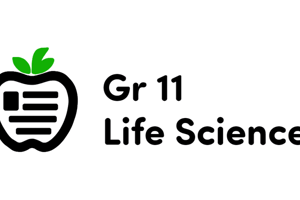Podcast
Questions and Answers
What type of symbiotic relationship involves one organism benefiting while the other is unaffected?
What type of symbiotic relationship involves one organism benefiting while the other is unaffected?
In a mutualistic relationship, what do sea anemones provide to clownfish?
In a mutualistic relationship, what do sea anemones provide to clownfish?
Which symbiotic relationship involves one organism consuming the body fluids of another?
Which symbiotic relationship involves one organism consuming the body fluids of another?
What happens in interspecific competition?
What happens in interspecific competition?
Signup and view all the answers
How does a barnacle benefit from attaching to a whale?
How does a barnacle benefit from attaching to a whale?
Signup and view all the answers
What type of relationship is described when the lamprey draws nourishment from the fish and weakens it over time?
What type of relationship is described when the lamprey draws nourishment from the fish and weakens it over time?
Signup and view all the answers
Which type of competition involves two or more species fighting for a shared resource, leading to reduced fitness and growth for all?
Which type of competition involves two or more species fighting for a shared resource, leading to reduced fitness and growth for all?
Signup and view all the answers
If two individuals of the same species are competing for limited food, what type of competition is this?
If two individuals of the same species are competing for limited food, what type of competition is this?
Signup and view all the answers
When one species benefits and the other is neither helped nor harmed, what type of relationship is this?
When one species benefits and the other is neither helped nor harmed, what type of relationship is this?
Signup and view all the answers
In a situation where two plant species are competing for sunlight, what is the likely outcome in terms of their growth rates?
In a situation where two plant species are competing for sunlight, what is the likely outcome in terms of their growth rates?
Signup and view all the answers
Study Notes
Symbiotic Relationships: Mutualism, Commensalism, Parasitism, Interspecific and Intraspecific Competition
Introduction
Symbiotic relationships refer to the close, long-term interactions between individuals of two different species. These relationships can be categorized into four main types: mutualism, commensalism, parasitism, and competition. Understanding these symbiotic relationships is essential for understanding biodiversity patterns and the functioning of ecosystems.
Mutualism
Mutualism is a symbiotic relationship where two organisms of different species provide each other with resources or services, and both organisms benefit. An example of mutualism is the relationship between sea anemones and clownfish. Sea anemones provide shelter and protection, and clownfish provide nutrients in the form of waste. Both species benefit from this interaction.
Commensalism
Commensalism is an interaction where one organism benefits, and the other organism is not significantly affected. For instance, a barnacle attaching to a whale exhibits commensalism. The barnacle benefits from being able to gather food from the water as the whale swims, while the whale is unaffected.
Parasitism
Parasitism is a relationship where one organism, the parasite, benefits by living and feeding on the other organism, the host. A sea lamprey is a parasite that attaches itself to a host fish and consumes the fish's body fluids. The lamprey draws nourishment from the fish, and the fish gradually weakens over time.
Interspecific and Intraspecific Competition
Interspecific competition occurs when two or more species utilize a shared resource and limit each other's ability to access that resource. This can lead to reduced fitness and/or growth rates for both species. For example, if two plant species are competing for sunlight, their growth rates may be reduced if one species takes more sunlight than the other.
Intraspecific competition occurs within a single species, where individuals compete for resources or space. This can lead to reduced fitness and/or growth rates for the competing individuals. For example, if two individuals of the same species are competing for a limited food source, their growth rates may be reduced.
Conclusion
These symbiotic relationships play a crucial role in shaping biodiversity patterns and the functioning of ecosystems. Understanding these relationships is essential for the conservation and management of biodiversity. By studying these interactions, we can gain valuable insights into how species coexist and interact within ecosystems.
Studying That Suits You
Use AI to generate personalized quizzes and flashcards to suit your learning preferences.
Description
Test your knowledge on the different types of symbiotic relationships, including mutualism, commensalism, parasitism, interspecific and intraspecific competition. Learn how organisms interact and depend on each other in ecosystems.




